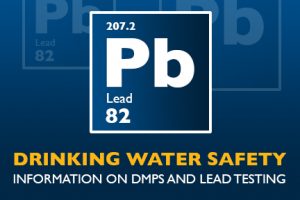Visit water.dmschools.org for DMPS Drinking Water Test Information
 Less than a month after beginning a district-wide program to test for lead in drinking water, Des Moines Public Schools is making results and related information available to the public at water.dmschools.org.
Less than a month after beginning a district-wide program to test for lead in drinking water, Des Moines Public Schools is making results and related information available to the public at water.dmschools.org.
With recent national attention to lead in drinking water, DMPS began steps this month to determine whether this is an issue in Des Moines and to ensure safe drinking water in schools. While such testing is not required under Iowa law, DMPS is taking this action to further ensure a healthy environment in schools.
“It is very important to note that this is the beginning, not the end, of our efforts to ensure safe drinking water in our schools,” said Bill Good, chief operations officer at Des Moines Public Schools. “Beginning this summer the school district will implement a plan to now regularly test drinking water building-wide at all schools on a regular basis.”
“As a public water supplier, Des Moines Water Works is required to test for lead, and the community should be assured the public water supply meets the lead and copper rule. While Des Moines Public Schools is not required to perform lead testing at their facilities, given recent national events and concerns over lead, the school district has taken a proactive approach within their facilities so they are aware of localized issues and can take corrective action where necessary,” said Des Moines Water Works CEO Bill Stowe. “This proactive and conservative approach by DMPS is appropriate given the potential health risk, and DMWW will assist the school district in any way we can.”
The school district’s lead testing initiative began with initial building screenings. As of April 27, 2016 test results have been received for 771 samples, with additional results still pending. Results will be updated on a regular basis as data becomes available. The samples were collected from water fountains, kitchens, nurses’ offices, and other sources of drinking water at each of the district’s school buildings.
At this time, 18 of the 771 initial samples – or 2.3% – had a lead level of at least 15 parts per billion (ppb), and required additional testing based upon guidelines from the U.S. Environmental Protection Agency. Based on EPA testing guidelines, follow-up tests were taken from each of these locations, and only 1 exceeded 15 ppb.
When lead levels above 15 ppb are found in any school building, the district is taking corrective action to reduce lead from the building’s drinking water based upon steps recommended by health and environmental experts. These steps include replacing equipment or regularly flushing drinking fountains and sinks. While not required, these steps are considered to be best practices by the district to provide safe drinking water at all schools.
The district’s web page at water.dmschools.org provides additional information for parents and the public. The page includes a searchable database for a summary of results for each school, including how many samples were taken, whether any were above 15 ppb and, if so, what steps are being taken. In addition, there is more information about the district’s protocol for the initial lead testing as well as links to outside experts on lead and drinking water.




